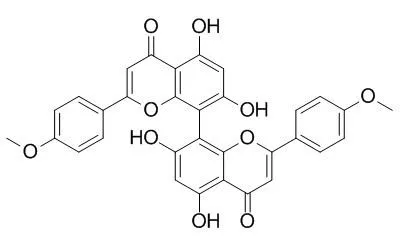The plants of the genus Phyllanthus (Euphorbiaceae) have been popularly employed for the treatment of kidney and bladder calculi, diabetes, hepatitis, and dysentery, and have also been used against affections of the intestines (1, 2).
METHODS AND RESULTS:
Previous studiescarried out by our laboratory have demonstrated that some alkaloids isolated from P. sellowianus exhibited an antispasmodic activity similar to papaverine in several pharmacological models (3). One of the compounds was identified as a new alkaloid denoted as phyllanthimide (4). Recently, we have also shown that the hydroalcoholic extracts of several species of the genus Phyllanthus, including P. sellowianus, given either orally or intraperitoneally, exhibited potent antinociceptive activity in different models of nociception in mice (5). Recent papers on the chemistry of this species have shown the presence of a sterol, phyllanthol (6), a biflavonoid, 4',4'''-Di-O-methylcupressuflavone (7), a mixture of sterols containing stigmasterol, beta-sitosterol,and campesterol, as well as an acetophenone, 2-hydroxy-4,6-dimethoxyacetophe-none (xanthoxyline) (8).
CONCLUSIONS:
In this study, we describe the isolation and identification of other compounds, not reported, as far as we know, for P. sellowianus. |






 Cell. 2018 Jan 11;172(1-2):249-261.e12. doi: 10.1016/j.cell.2017.12.019.IF=36.216(2019)
Cell. 2018 Jan 11;172(1-2):249-261.e12. doi: 10.1016/j.cell.2017.12.019.IF=36.216(2019) Cell Metab. 2020 Mar 3;31(3):534-548.e5. doi: 10.1016/j.cmet.2020.01.002.IF=22.415(2019)
Cell Metab. 2020 Mar 3;31(3):534-548.e5. doi: 10.1016/j.cmet.2020.01.002.IF=22.415(2019) Mol Cell. 2017 Nov 16;68(4):673-685.e6. doi: 10.1016/j.molcel.2017.10.022.IF=14.548(2019)
Mol Cell. 2017 Nov 16;68(4):673-685.e6. doi: 10.1016/j.molcel.2017.10.022.IF=14.548(2019)